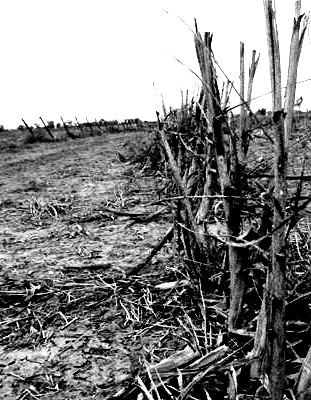Crop issues predicted
 Experts say climate change may increase the likelihood of simultaneous crop failures worldwide.
Experts say climate change may increase the likelihood of simultaneous crop failures worldwide.
According to a modelling study published in Nature Communications, the likelihood of major food producing regions around the world - such as in North America and Eastern Europe - simultaneously producing low crop yields might increase as the global climate shifts.
Global warming is already increasing the frequency and intensity of weather extremes and the likelihood of their simultaneous occurrence around the globe, which can have greater societal impacts beyond the sum of each extreme occurring in isolation.
For example, these extremes have implications for global food security and food system supply chains, and can lead to associated spikes in food prices, conflict and undernutrition in countries that rely on imports.
Therefore, understanding the likelihood of concurrent crop failures is important for increasing the resilience of the global food system and mitigating climate risks.
To assess the changes in concurrent weather extremes over crucial breadbasket regions, Kai Kornhuber and colleagues analysed observational and climate model data between 1960–2014 and for future projections between 2045–2099.
They found that there is an increased likelihood of concurrent low yields during summers featuring meandering jet streams high in the atmosphere in both observations and models.
Hot spots of particularly low yields under future simulations are spread throughout the Northern Hemisphere, such as East Asia, North America, and East Europe.
However, state of the art models underestimate the negative effects of such circulation patterns on crop yields, and there are uncertainties in future assessments of harvest failures and related systemic risks.
The authors stress the urgency of rapid emission reductions to prevent climate extremes and their complex interactions becoming increasingly unmanageable.
The findings suggest potential high-impact blind spots in current climate risk assessments, highlighting the urgent need for more research to support model improvements in climate and agriculture domains.








 Print
Print